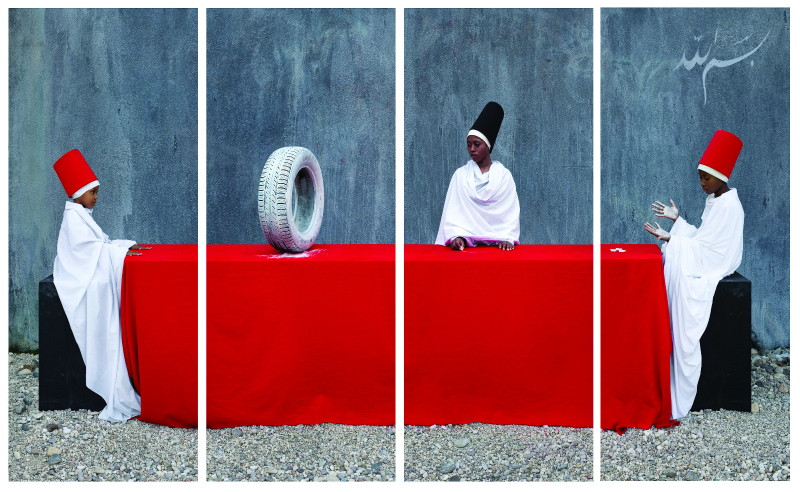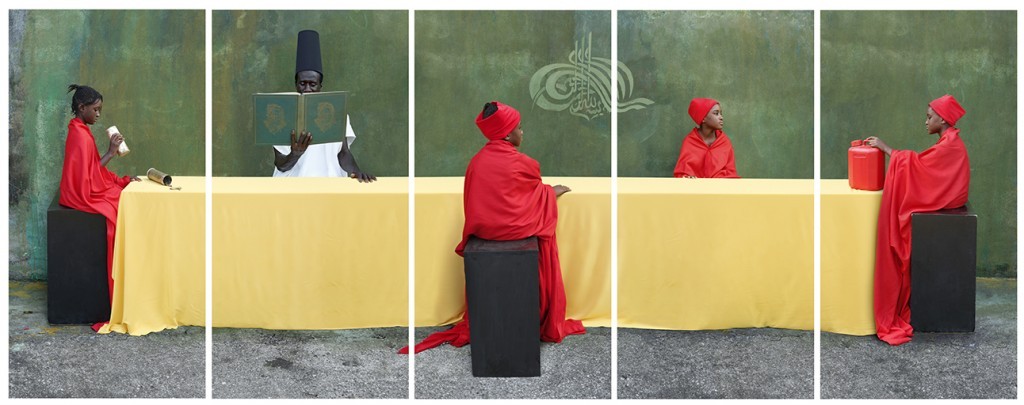
Maimouna Guerresi will be represented by Mariane Ibrahim Gallery, Seattle on VOLTA New York, March 5 until March 8. From March 20 on she will have a solo show in the same gallery. Until May 1.
Light Bodies, 2014.
(First published: February 15, 2015)
About:
 White Rubber Tire – First Lesson, 2014.
White Rubber Tire – First Lesson, 2014.
Perspective on the relationship between women and society, with particular reference to those countries in which the role of women is most marginalized. For over twenty years Guerresi’s work has been about empowering women and bringing together individuals and cultures in an appreciation for a context of shared humanity, beyond borders – psychological, cultural, and political. She uses recurrent metaphors such as milk, light, the hijab, trees, and contrasting white on black to create awareness of the vital unifying qualities of the feminine archetype and its special healing potential. Guerresi’s art is uniquely authentic. Her work is inspired by personal experience and cultural contexts that reference universal myths, the sacred realm, and the female condition, all of which are seen as vital expressions of the human form: an essentially spiritual and mystic body. Through photographs and videos of silent, austere, veiled women in domestic scenes and individual poses, her work functions as both metaphor and provocation. Guerresi’s images are delicate narratives with fluid sequencing, as well as rational analyses: women dressed in white, enveloped in chadors, fixed within their own tradition and isolated from and by it in the contemporary world. Her Fatimah image suggests the woman as Mother-Earth supporting us in the original energy cycle of Space-Universe-Infinity.
(from website artist)
 M-eating – teacher and students, 2013.
M-eating – teacher and students, 2013.
“In the continued violence of the twenty-first century there is something critical and compelling about work that brings ideals of humanity, spirituality and empathy into the frame through a language that is affective and poetic. There is something hopeful about art’s capacity – visually, sonically, spatially, experientially, imaginatively – to counter the violence of empirical, didactic, authoritarian thought, and current political atmospheres of disillusionment in the aftermath of revolutions that bring no peace. Simultaneously, there is always the risk, in work that reaches for the spiritual and affective, of re-inscribing languages that obscure actual power relations (including those that may be embedded in spiritual practices and their deployment). These tensions bring critical depth to MaÏmouna’s work and open up further possibilities for reflecting on her significance as an artist.”
(from essay Yvette Greslé on Africanah.org)

